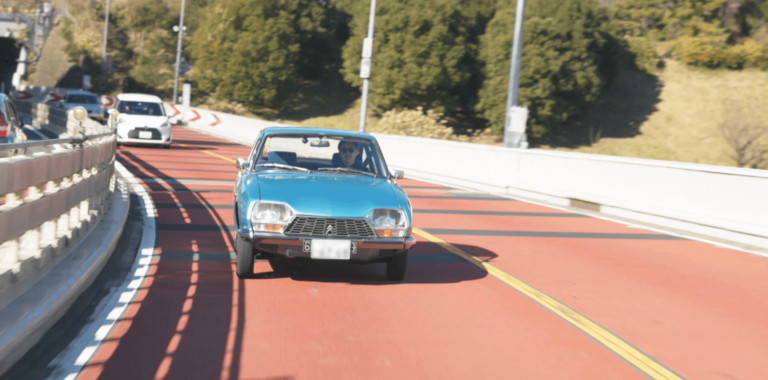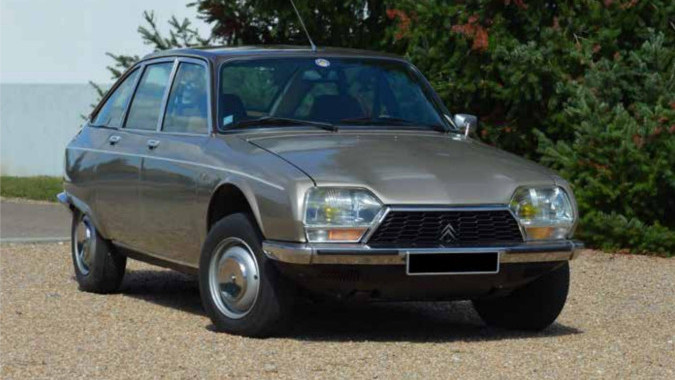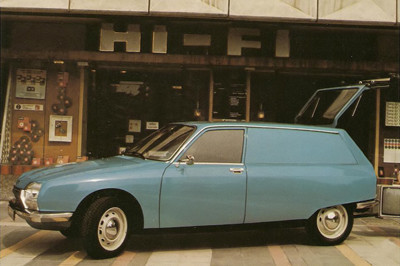Citroën GS: a revolutionary saloon celebrating its 55th anniversary
- Jérémy

- Apr 9
- 3 min read

In 1970, Citroën filled the gap between the minimalist 2CV and the sophisticated DS by launching the GS, an innovative compact saloon that celebrates its 55th anniversary in 2025. This model made automotive history by combining aerodynamic design, advanced technologies and exceptional comfort, thus consolidating Citroën's position in the compact saloon segment.
Innovative design and technology
The Citroën GS stands out for its modern and aerodynamic design. Its bodywork, with its smooth, flowing lines, reflects the importance attached to aerodynamics, a design that allows better air penetration, thus helping to reduce fuel consumption and optimise performance. Its exceptionally low drag coefficient (Cd) of 0.36 (later 0.318 for the GSA X1 and X3) demonstrated the attention paid to the aerodynamic efficiency of the DS, an achievement resulting from extensive wind tunnel studies, a rare approach for the time.
Inside, Citroën continued to innovate with a futuristic and original dashboard, with an instrument cluster featuring a unique layout and rotating drum gauges inspired by aeronautics, providing clear and precise readings. The GS also featured hydro-pneumatic suspension, providing exceptional ride comfort and handling that surpassed the competition of the time.
Under the bonnet, the GS was powered by an air-cooled flat four-cylinder engine. At launch, the 1015cc engine produced 55.5 bhp. A 1220cc version was introduced in 1972, offering improved performance and fuel economy. Later, a twin-rotor version was offered with a 995cc Wankel rotary engine producing 107 bhp, although the latter met with limited success due to its technical complexity and high cost; only 847 units were sold.
The GS was available in several trim levels, including the basic version, the GS Club and the GS Pallas, the latter offering additional equipment for increased comfort. In 1971, fresh from winning the title of Car of the Year 1971, Citroën extended the GS range with the introduction of a five-door hatchback, ideal for families, with a 710-litre boot, and a three-door "Service" hatchback, aimed at professionals in need of a commercial vehicle.
A long career of evolution
Throughout its career, the Citroën GS underwent several notable improvements. In 1979, it was restyled and renamed the GSA (GS Améliorée). This version featured a plastic body and, more importantly, a tailgate on the saloon to replace the narrow boot. The interior also benefited from improvements, with higher quality finishes and updated equipment.
The GSA was offered in several trim levels, including the GSA Club, GSA Pallas and GSA X3, the latter with 65 bhp. Special editions were also introduced, such as the 1982 GSA Tuner, fitted with a high quality hi-fi system to appeal to a younger clientele, and the 1984 GSA Cottage, a limited edition of 1,850 with a special beige colour and Scottish tweed upholstery.
Production of the GS and GSA extended from 1970 to 1986, with a total of nearly 2.5 million units produced, a commercial success that demonstrated the appeal of this innovative model to the public.
The Citroën GS created a unique offering in the Citroën range, combining the simplicity of the 2CV with the advanced technology of the DS. It took the best of these two iconic models to offer the market a unique compact saloon combining comfort, innovation and modern design. Its commercial success and the numerous developments it has undergone throughout its history testify to its importance in the history of the automobile and the Citroën brand.
As we celebrate the 55th anniversary of the GS in 2025, it is important to recognise the impact this model has had on the automotive industry and its role in the evolution of the compact sedan. The GS remains a symbol of Citroën's innovation and boldness, having shaped its era and left a lasting impression in the hearts of brand enthusiasts.
















































Comments